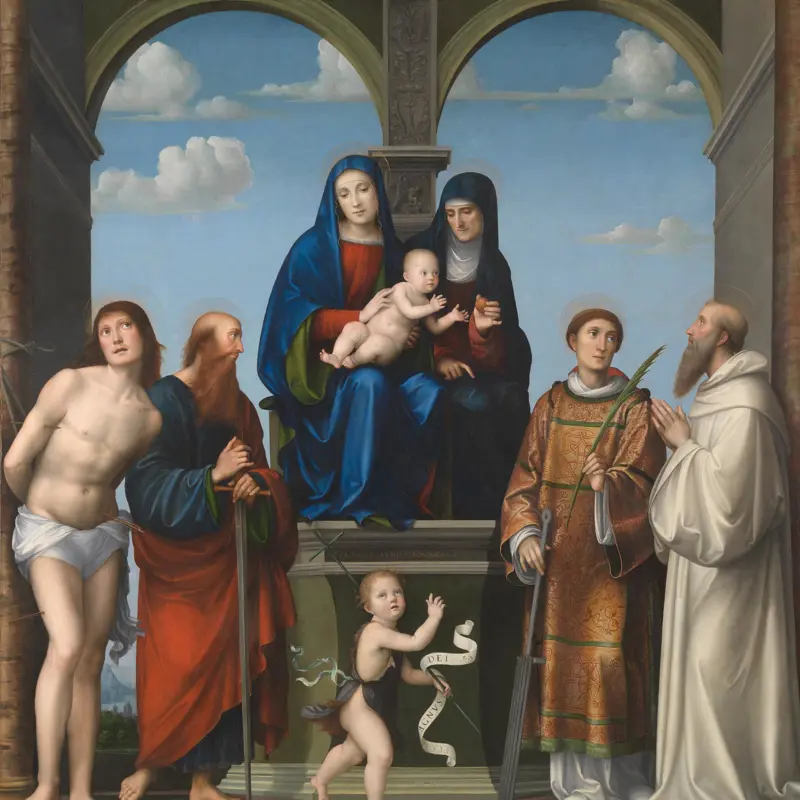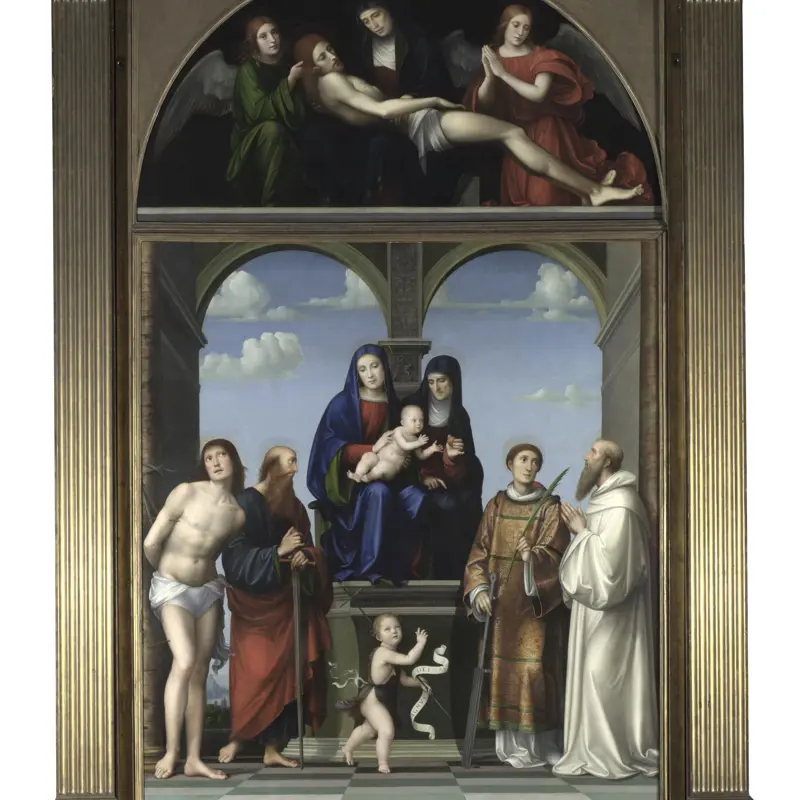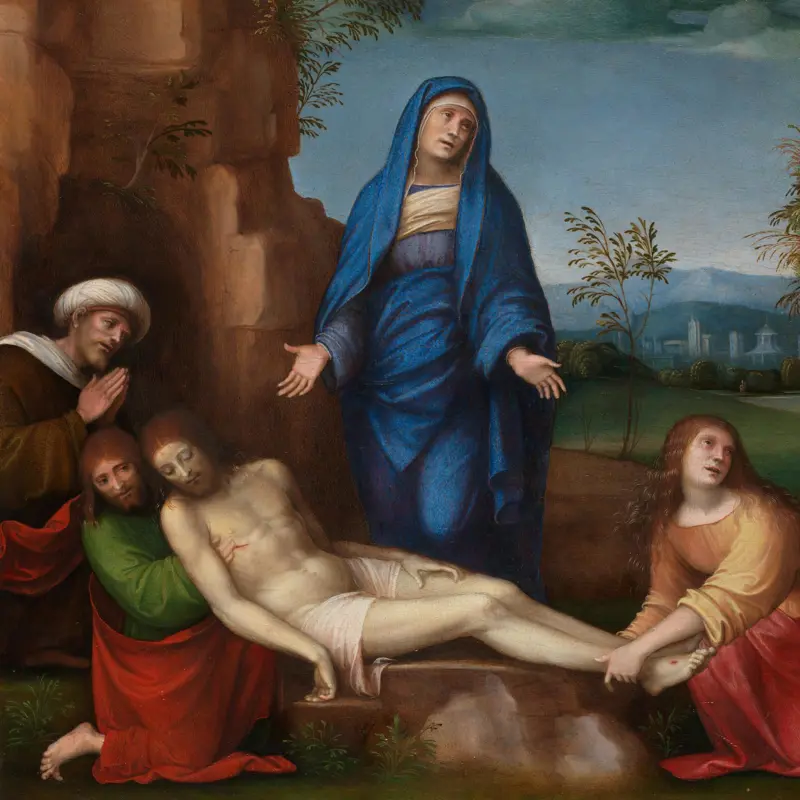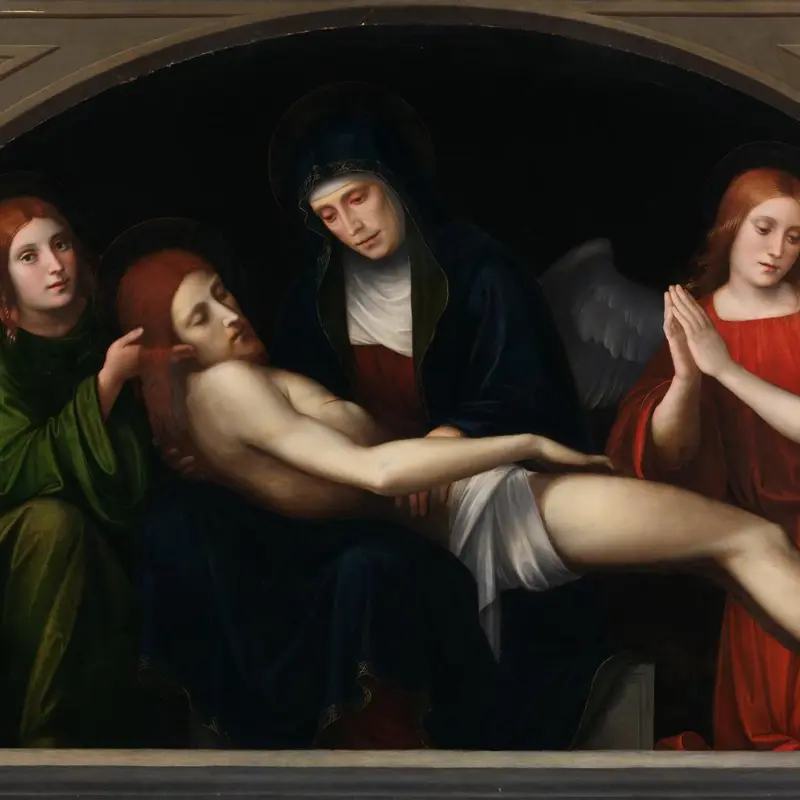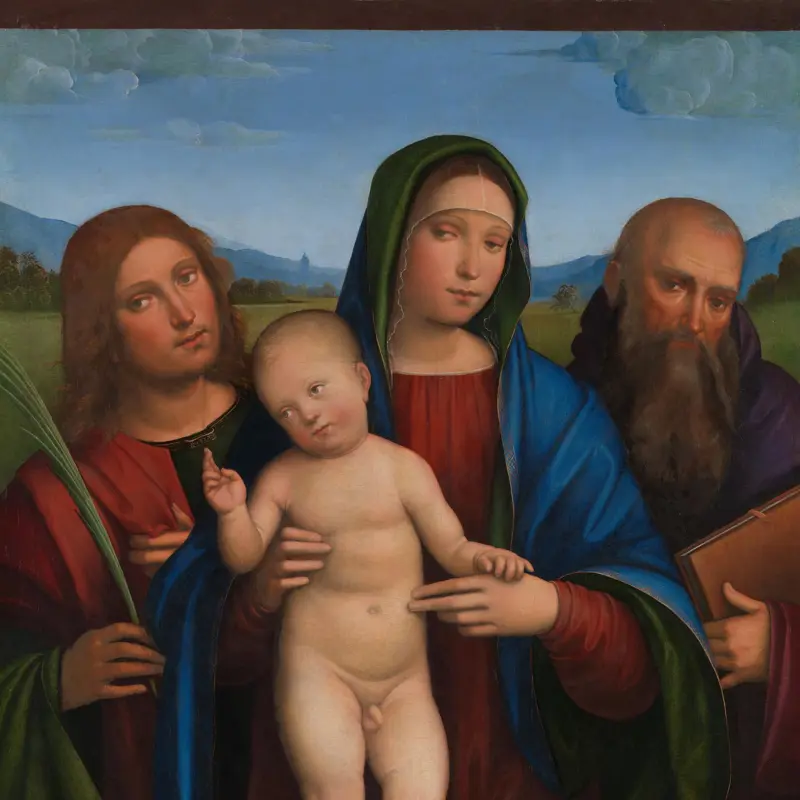Fausto Muzzi and Giuseppe Guizzardi, after Francesco Francia, 'The Virgin and Child with an Angel', about 1840-4
About the work
Overview
This painting is a nineteenth-century copy of The Virgin and Child with an Angel by Francesco Francia (Carnegie Museum of Art, Pittsburgh). It is highly unusual because it is a forgery, made to deceive.
When the painting was bequeathed to the National Gallery in 1924 it was thought to be by the late fifteenth-century painter and goldsmith, Francesco Francia. In 1954, another version of the composition appeared on the art market (now in the Carnegie Museum). Scientific examination subsequently proved that the National Gallery’s picture was a deliberate fake.
The Virgin holds the naked infant Christ, who stands on her knee and raises his hand to us in blessing. An angel offers him cherries in a fantastic golden chalice, which may give us a sense of the appearance of Francia’s work as a goldsmith – almost all of which has been lost.
Key facts
Details
- Full title
- The Virgin and Child with an Angel
- Artist
- Fausto Muzzi and Giuseppe Guizzardi, after Francesco Francia
- Artist dates
- 1801 - 1879; 1779 - 1861; about 1447 - 1517
- Date made
- about 1840-4
- Medium and support
- oil on wood
- Dimensions
- 58.5 × 44.5 cm
- Inscription summary
- Signed; Dated and inscribed
- Acquisition credit
- Mond Bequest, 1924
- Inventory number
- NG3927
- Location
- Not on display
- Collection
- Main Collection
Provenance
Additional information
Text extracted from the ‘Provenance’ section of the catalogue entry in Giorgia Mancini and Nicholas Penny, ‘National Gallery Catalogues: The Sixteenth Century Italian Paintings’, vol. 3, ‘Bologna and Ferrara’, London 2016; for further information, see the full catalogue entry.
Exhibition history
-
2010Close Examination: Fakes, Mistakes and DiscoveriesThe National Gallery (London)30 June 2010 - 12 September 2010
-
2014Faked, Forgotten, Found: Four Renaissance Paintings InvestigatedCarnegie Museum of Art28 June 2014 - 14 September 2014
Bibliography
-
1951Davies, Martin, National Gallery Catalogues: The Earlier Italian Schools, London 1951
-
1986Davies, Martin, National Gallery Catalogues: The Earlier Italian Schools, revised edn, London 1986
-
2001
C. Baker and T. Henry, The National Gallery: Complete Illustrated Catalogue, London 2001
-
2016Mancini, Giorgia, and Nicholas Penny, National Gallery Catalogues: The Sixteenth Century Italian Paintings, 3, Bologna and Ferrara, London 2016
About this record
If you know more about this work or have spotted an error, please contact us. Please note that exhibition histories are listed from 2009 onwards. Bibliographies may not be complete; more comprehensive information is available in the National Gallery Library.


